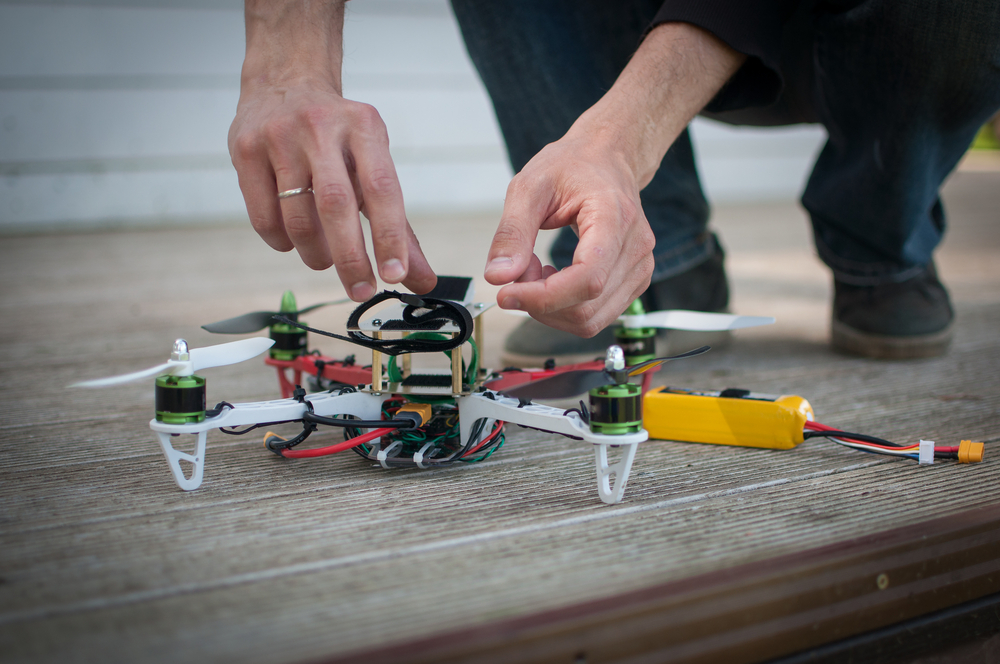
Building Your First DIY Drone
Ready to fly? Learn the basics of building your own drone from scratch — from picking the parts to your first successful flight.
Table of Contents
- Why Build a DIY Drone?
- Basic Components You’ll Need
- Choosing the Right Frame
- Motors and Propellers
- The Brain: Flight Controller
- Power System: ESCs and Battery
- Assembly Tips for Beginners
- Test Flight and Troubleshooting
- Conclusion
- Future Potential
Building a drone sounds hard? Hmph, not really! With the right parts and a little patience, even a beginner can get their creation off the ground. This guide covers the essentials you’ll need to take your first steps into the thrilling world of DIY drones.
Why Build a DIY Drone?
There’s something magical about flying something you built. A DIY drone isn’t just a toy — it’s a learning experience that teaches you about electronics, physics, and control systems. Plus, it’s way more satisfying than buying a ready-made one, duh.
Basic Components You’ll Need
Before you get started, here's a simple checklist of what you'll need:
- Frame
- Motors (usually 4 for quadcopters)
- Propellers
- Electronic Speed Controllers (ESC)
- Flight Controller
- LiPo Battery
- Transmitter & Receiver
- Optional: Camera (for FPV)
Each part has its role, and together they make your drone take flight!
Choosing the Right Frame
The frame determines your drone’s size, strength, and layout. For beginners, a 250mm carbon fiber frame is a solid pick — it’s light, durable, and compatible with most parts. Don't pick something huge and crazy at the start, baka!
Motors and Propellers
Brushless motors are the go-to choice. Match them properly with the propellers — smaller props spin faster but consume more power, while larger ones give more lift but reduce speed. Balance is key.
The Brain: Flight Controller
A flight controller is the brain of your drone — it reads data from sensors and decides how the motors respond.
Popular choices include the Betaflight F4, Pixhawk, and KK2. Start with a simple one that supports stabilization and beginner flight modes.
Power System: ESCs and Battery
ESCs connect the flight controller to the motors and regulate speed. Make sure they're rated for your motor’s current draw. And as for batteries, go with a 3S or 4S LiPo — powerful but manageable for newbies.
Assembly Tips for Beginners
- Use zip ties and soft mounts to reduce vibrations.
- Keep your wiring clean and short to avoid signal noise.
- Don’t overtighten screws (seriously, stop trying to break things).
- Calibrate your ESCs and flight controller before first flight.
Test Flight and Troubleshooting
First flights should be done in open fields. Expect crashes — that’s part of the game! Common issues:
- Drone flips at takeoff? Check motor direction.
- No lift? Battery might be underpowered.
- Wobbly flight? Recalibrate gyro sensors and check prop balance.
Conclusion
DIY drones are the perfect mix of tech and fun. Once you build your first, you’ll unlock a whole new hobby filled with upgrades, custom mods, and FPV racing. So stop stalling and build something already!
Future Potential
Drones are more than toys — they’re being used in agriculture, cinematography, surveillance, and even emergency rescue. Master the basics today, and tomorrow you could be flying missions like a pro.
Building a drone isn't just about circuits and propellers — it’s about vision, patience, and the thrill of watching your own machine soar through the sky. So go on, take the leap, engineer!